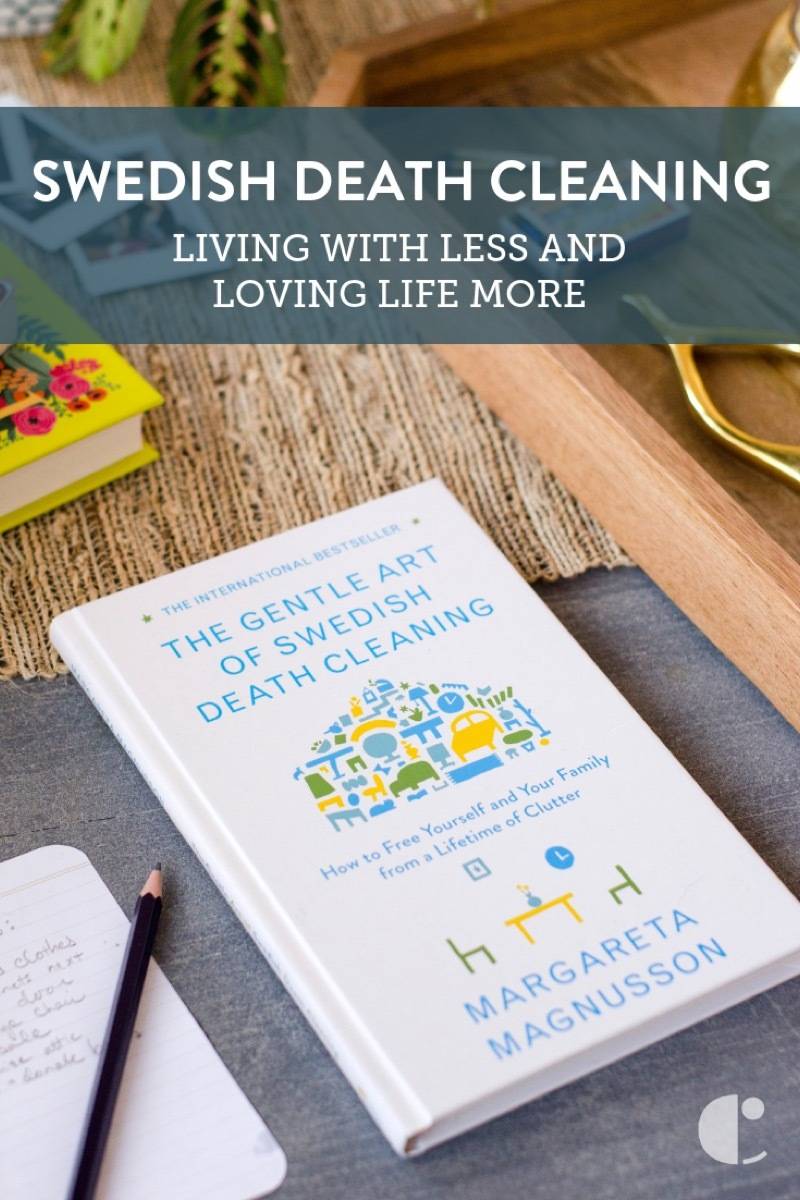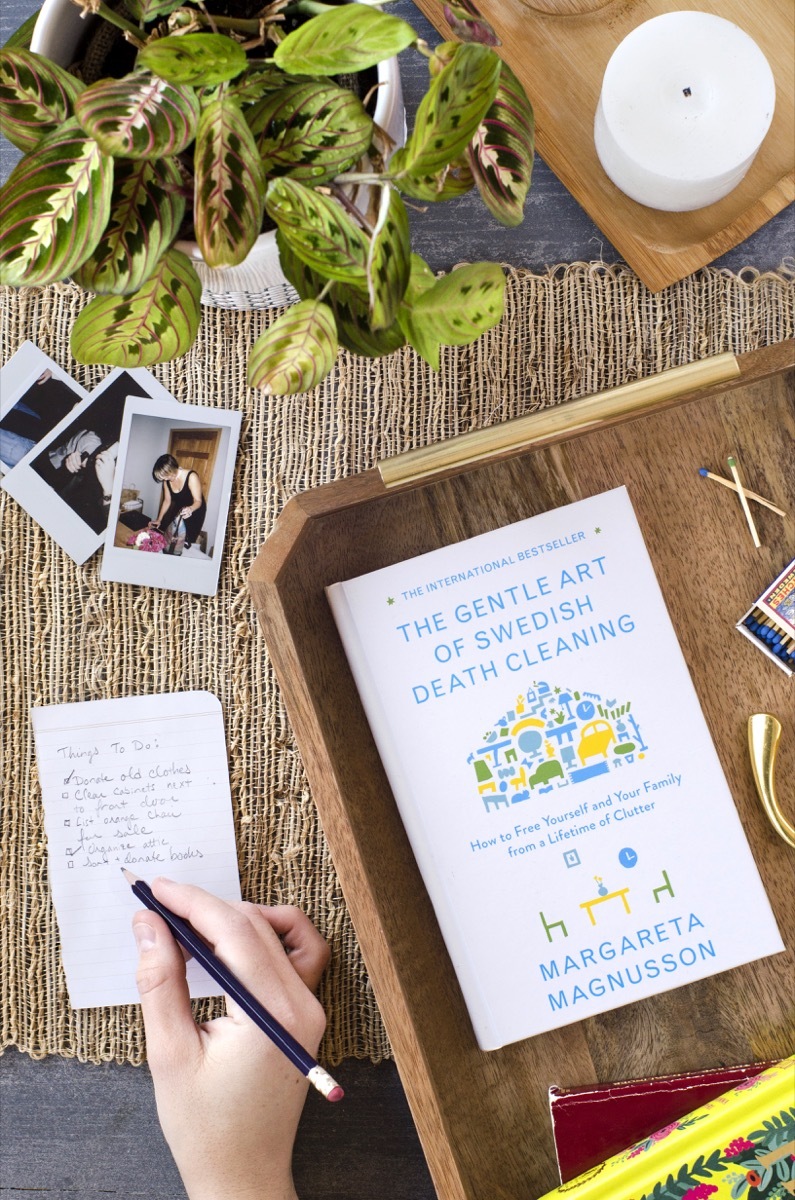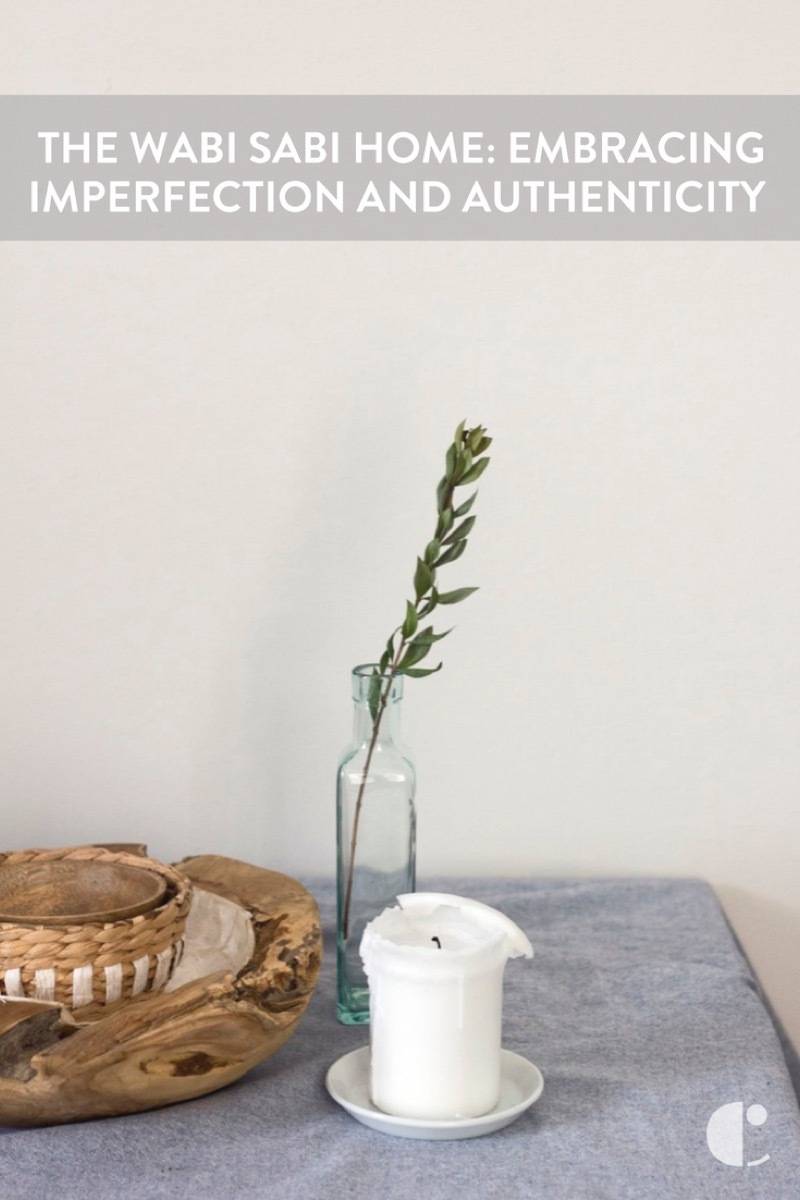I got a text the other day from my mom. She was asking me if I wanted a collection of magazines that she had held onto from my childhood (if you’re curious, it was a collection of Cricket magazines from the late 70s). Then I got another text — my mom had found an old photo that she wanted to share with me. Then four more texts came my way, each containing a picture or memory of something from the past. It was clear that she was doing some deep cleaning.
When I asked her what she was up to, she replied, “Have you heard of Swedish Death Cleaning?” Um, excuse me??
When I read the words Swedish Death Cleaning, my first thought was, “How morbid!” If you’re found this article, you might be thinking along the same lines as me. No, Swedish Death Cleaning has nothing to do with zombies who enjoy dusting, and no, this trending topic has nothing to do with the similarly-sounding genre of music, Swedish death metal. In spite of its name, this Nordic tradition is actually more happy and wholesome than it is hardcore.
What is Swedish Death Cleaning?
In Sweden, it’s called Döstädning. Dö meaning “death,” and städning meaning “cleaning.” It’s the process of sorting and preparing your belongings in a way that those who come after you will appreciate. This can include everything from shrinking down your wardrobe and cleaning out the attic, to making plans for who gets the dining table and writing up a will.
Swedish Death Cleaning is the process of paring down what you own, so that at the end of your life, your children, spouse, or caregiver is not burdened with an overabundance of stuff and junk to sort through and deal with. This process also benefits the now. Consequently, by thinning out your personal possessions, you have more time to focus on the parts of your life that your really care about, and you spend less time minding all your stuff.
This gentle minimalism also means embracing and cherishing those of your physical possessions that you actually love. And you don’t have to wait until the end of your life to adopt the practice. In fact, it’s better if you get to it sooner rather than later.
The Gentle Art of Swedish Death Cleaning
After my mom piqued my curiosity about the Swedish death cleanse practice, I decided to do a little reading myself. I picked up a copy of The Gentle Art of Swedish Death Cleaning by Margareta Magnusson. It’s currently the only book on the topic, as far as I could find. It’s a lovely little read that explores the concept of döstädning, and how to apply it to the different areas of your home and life.
I’m pretty lucky that my mom reached out to me first about Swedish Death Cleaning, and that she is already a fairly organized person. Often, the topic of what-to-do-with-all-the-stuff is a hard one to bring up with parents, especially those who have a tendency to be pack-rats. Maybe you’re in a similar situation with parents or in-laws. If so, there are sections in this book that specifically speak to how to approach this delicate topic, from someone who has had to deal with the topic of death more than once.
The Author: Margareta Magnusson
Margareta Magnusson, döstädning expert, ages herself somewhere between eighty and one hundred years old (adorable). Born in Sweden, Magnusson studied design in Stockholm, and later went on be an artist; her work was exhibited in museums in Hong Kong, Singapore, and Gothenburg, just to name a few. Mother to five and having done several rounds of death cleaning for loved ones she has already lost, Magnusson is quite familiar with the need to pare down and stay organized in order to fully enjoy life.
Who is Döstädning for?
Swedish Death Cleaning is for everyone.
Because, everyone dies.
But that fact is not meant to get you down. First of all, coming to terms with the notion that you can’t take your belongings to the grave with you is a good thing! In her book, Magnusson says that those who are too attached to their belongings (also known as pack-rats) are the ones who probably do not a strong grasp on the reality of mortality. They have difficulty with the notion that one day their life will end. So, if the reverse is – if you are open and willing to part with the physical things in your – you open yourself up more to accepting the future, and enjoying the present.
A Swedish Death Cleanse does not mean immediately tossing everything in sight. It’s the slow process that makes this method less painful. Rather than toss everything in the trash, Magnusson suggests saying good-bye to your belongings, and appreciating them on their way out. Likewise, it doesn’t mean living with nothing. It means living with just enough.
Magnusson recommends that if you are nearing retirement, to start the cleaning process earlier, rather than later, as you are more able-bodied now than ever. But you don’t have to wait until you’re in your 60s to adopt some of the practices of Swedish Death Cleaning. Everyone can benefit from thinning out their personal possessions, opening up their lives to enjoying activities and relationships over stuff and collections.
The Process
In Magnusson’s book, she lays out a loose and approachable framework for those who want to start the Swedish Death Cleaning process. Even if you are not at the end of your life, this framework works functions for people who feel overwhelmed by or too attached to their stuff, and need to purge.
Where to Start
It starts with the attic, basement, or storage near the entryway. Essentially, this purge process begins with things that don’t hold sentimental value. If you can start strong, you’re much more likely to stay in momentum throughout the process.
Margareta Magnusson suggests that you tell your friends and family that you’re death cleaning – they might be willing to lend a hand, and they might be interested in taking some of your stuff off your hands! Or, maybe your cleaning will inspire them to do a little purging of their own, and you can encourage each other throughout the process. However, Magnusson warns against friends or family members who may encourage you to hold onto too much. She says that if you can’t make a decision about an item, try reaching out to a third-party. An unbiased source can look at the situation and weigh the facts without getting hung up on the sentimentality.
Start with large items first, and finish with the small. Smaller items tend to have a higher emotional value, and will be more time-consuming to sort. Save those old letters and photos until the very end of the process!
To get a complete look at the process, I highly recommend picking up a copy of The Gentle Art of Swedish Death Cleaning. It’s a short, sweet read that cuts right to the subject of passing from the viewpoint of someone who has dealt with death many times. If you are the child of a mom or dad who is holding onto too much stuff, get a copy for your parent as well.
In Summary
Death cleaning is as much for you as it is for your loved ones. For those in your life, it means that their final memory of you isn’t one of burdensome sorting, organizing, and dealing with your junk.
Thinning and limiting your personal possessions can lead to a happier life, too. With less clutter to distract your time and efforts, you can enjoy the things in life that really matter: relationships and experiences.
Swedish Death Cleaning means living with less. It means embracing reality, and most importantly, it means enjoying the now.


